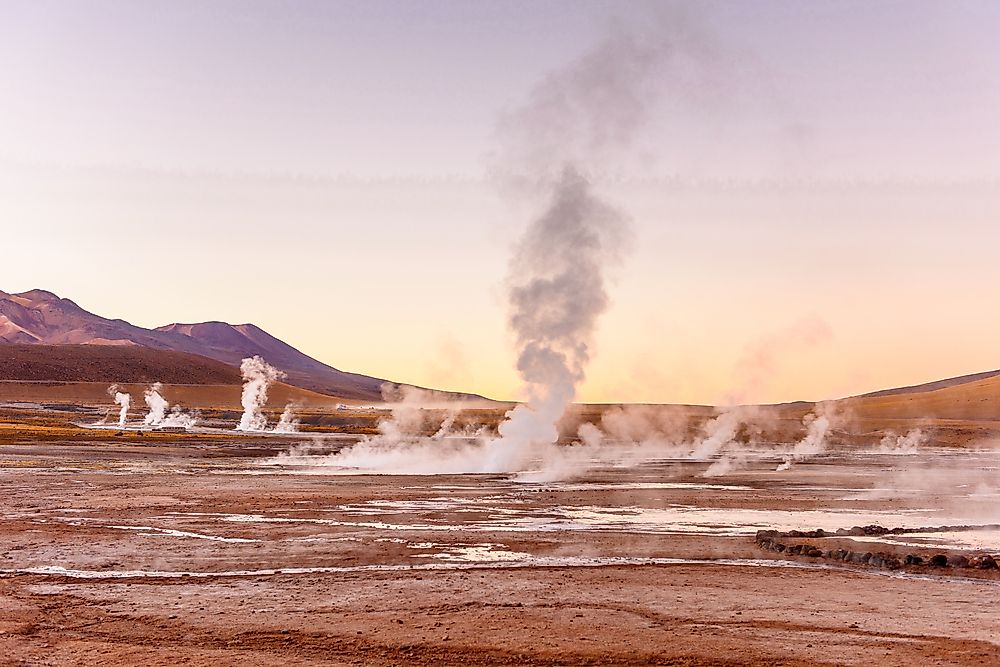El Tatio - Unique Places Around the World

The El Tatio geyser is the world’s third largest after Yellowstone and Valley of Geysers. It is the largest geyser south of the equator. The field is located at the base of stratovolcanoes within the Andes Mountains in the northern parts of Chile. The stratovolcanoes belong to the Central Volcanic Zone while El Tatio is part of a series of calderas and ignimbrites known as the Altiplano-Puna volcanic complex. El Tatio geyser comprises of several hot springs, geysers, and sinter deposits. The hot water from geyser collects to become the Rio Salado River. Today, the site is major tourist attraction, it was surveyed for potential geothermal power but an accident in 2009 discontinued the power projects.
Hydrology
The water discharged from the geyser is as a result of precipitation that enters the ground miles from the field. The surrounding calderas provide the heat. The permeability of the tectonic blocks and volcanic materials control the flow of water below the ground. As the water flows, it collects minerals and heat before jetting out the geysers and hot springs. It takes about fifteen years for precipitated water to reach the geyser field. The water flows through several aquifers, fault lines, and faults in rocks. As the water travels, it mixes up with magmatic brine. The two main geothermal reservoirs are the Puripicar and Salado ignimbrites. The water in the reservoirs can reach temperatures of 253 °C The springs yield 8.8–17.7 cubic feet of water per second at temperatures above boiling point.
Human Exploitation
At the start of the 20th century, the Comunidad de El Tatio Company was formed to generate power from the geyser. However, economic and technical problems prevented the efforts. Feasibility studies in the 1960s and 70s prospected the probability of large-scale production of electricity. The geyser was projected to potentially produce 400 megawatts. The project failed to take off although several wells were dug. In 2208 the Chilean government granted permission to companies to develop the geothermal sites with the aim of producing 40 megawatts. However, in September 2009, a well blew up resulting in a 200ft high steam fountain. The well was sealed on October 4th, 2009, but the company was forced to terminate its activities
Tourism
The site is a major tourist attraction with thousands of visitors. It is a source of income for the local communities especially the Atacameno who are responsible for its management. The geyser attracts about 400 visitors daily. Visitors to the site are warned of exposure to hot gasses that can result in injuries.











